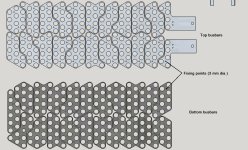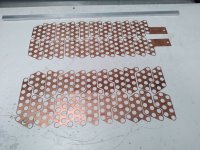harrisonpatm
10 kW
- Joined
- Aug 8, 2022
- Messages
- 862
I just appreciate this addition to the copper-nickel sandwich discussion, because according to his tests, you can get reliable copper welds at low-ish power, this copper tape is quite cheap and easy to manipulate, and although it is quite thin, his tests are showing that there actually is an increase in current carrying capability. Much appreciated












